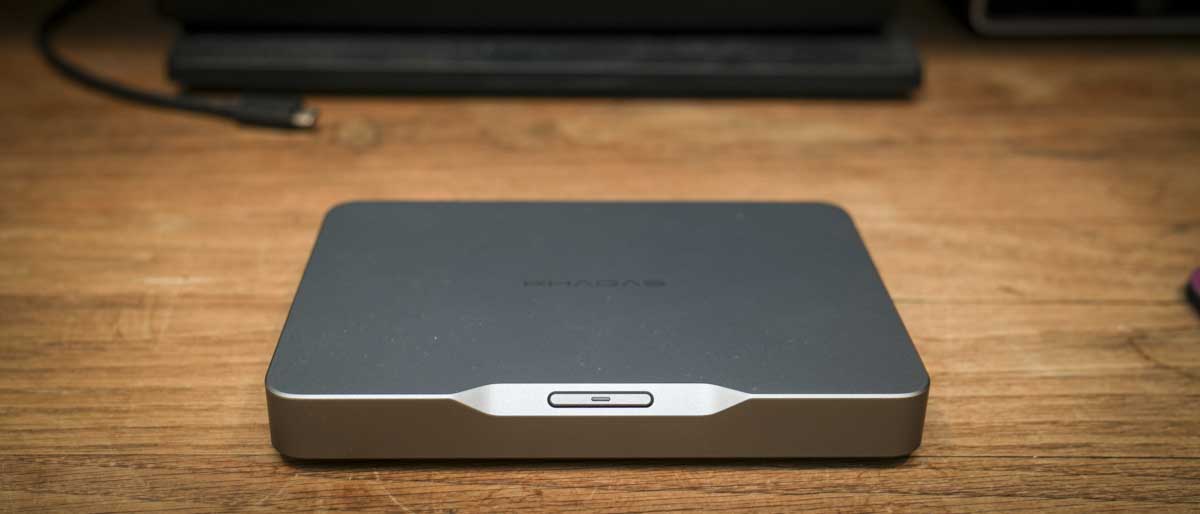TechRadar Verdict
Surprisingly, the Mind 2S is far more than just its stunning, simplistic looks. Inside, a powerful Intel Core Ultra 7 CPU powers through almost anything you can throw at it and that just with the core machine and before adding the Mind Dock and Mind Graphics. All this power does create heat and fan noise is an issue as is the price.
Pros
- +
Ultra-compact
- +
Extremely powerful
- +
Accessories further boost performance
Cons
- -
Expensive
- -
Limited ports
- -
Fan noise under load
Why you can trust TechRadar
Khadas Mind 2S: 30-second review
Starting out with the Mind 2S, it was instantly apparent that this small machine was something completely different. The whole concept of a mini PC, laptop, or desktop has been moved aside, and the Mind 2S essentially blends all three. When it comes to form factor, it's obviously a mini PC, although it's smaller than most, and that enables it to have huge portability.
Then, like a laptop, it features an internal battery that means that when it's unplugged from a monitor, keyboard, mouse and other accessories, you don't need to switch it off, when it's unplugged it just goes into sleep mode. So, if you want to transport the work you're doing in the office back home without shutting down the computer, as you would with a laptop, then you can, no need to shut down and re-open apps and documents your working on.
But then, like a desktop, it's been designed to be used with an external monitor, keyboard, mouse, and any other peripherals or accessories you want to plug in. Khadas, who manufacture this mini PC, also make an eGPU module (Mind Graphics), a dock (Mind Dock), and some specialist accessories for audiophiles (Tone 2). This means that at home, you might want to watch multimedia or some high-end gaming, then the Mind Graphics module can be interfaced giving you a power boost through the GeForce 4060 Ti GPU. In the office, where high-end graphics are probably not your main focus, unless in the creative sector, then it can plug into a docking station that gives you access to a greater number of ports, making it more work-centric.
This makes the Mind 2S something completely different, a blend of three types of computers in one, and that in itself is notable. But then you have the processing power, which at its heart features the latest Series 2 Intel Core Ultra 7 CPU, GPU and MPU in one chip, which through my tests proved to offer outstanding performance. I was amazed by just how well it was able to handle all of Microsoft Office's apps, general office work, browsing and mid-weight multimedia production. As I pushed the system more and more, it was hard to believe how easily it handled applications like Adobe Photoshop and Lightroom for high-resolution images, and even DaVinci Resolve for 4K video editing didn't seem to be much of an issue for this small machine.
The major issue for Khadas and the Mind 2S is that it's a new type of machine and educating buyers why they would want this over a laptop. It's small, compact, and fits into your backpack, so you can transport it between home and the office without adding too much bulk or weight. In fact, it's far smaller than any laptop and contains an incredible amount of power, considering the size.
The fact that they've designed such an innovative and easy-to-use dock to enable it to quickly sit on and connect to a larger system really does make sense. Likewise the eGPU will give the already impressive graphics a huge power boost.
At the end of the test, its potential is obvious, and the power, design and functionality are all appealing, compared to some of the best mini PC units I've reviewed, my only concern is the amount of noise the fans generate in order to keep everything cool when the processor is being pushed to the max and of course the price. But then even considering these issues, this is still an impressive and desirable machine.
Sign up to the TechRadar Pro newsletter to get all the top news, opinion, features and guidance your business needs to succeed!
Khadas Mind 2S: Price and availability
- How much does it cost? From £1599 / $1599
- When is it out? Available now
- Where can you get it? Directly from khadas.com and Amazon
The Khadas Mind 2S is currently available from Khadas, and I've also seen it on Amazon.com and Amazon.co.uk.
There are several versions of the Mind mini PC available, with the Mind 2 featuring an Intel Core Ultra 5 or 7 Series 1 and the 2S featuring the Intel Core Ultra 7 Series 2. In this review, I've looked at the Intel Ultra 7 Series 2 version of the Mind 2S, which features 64 GB of RAM and a 2 TB SSD as standard.
There's no variation on that, with the unit coming in at $1599. If you want to add the Mind Dock, that's another $179, and for the Mind Graphics, that's a further $1199 for the 16 GB version of the Nvidia GeForce RTX 4060 Ti.
- Value: 4 / 5
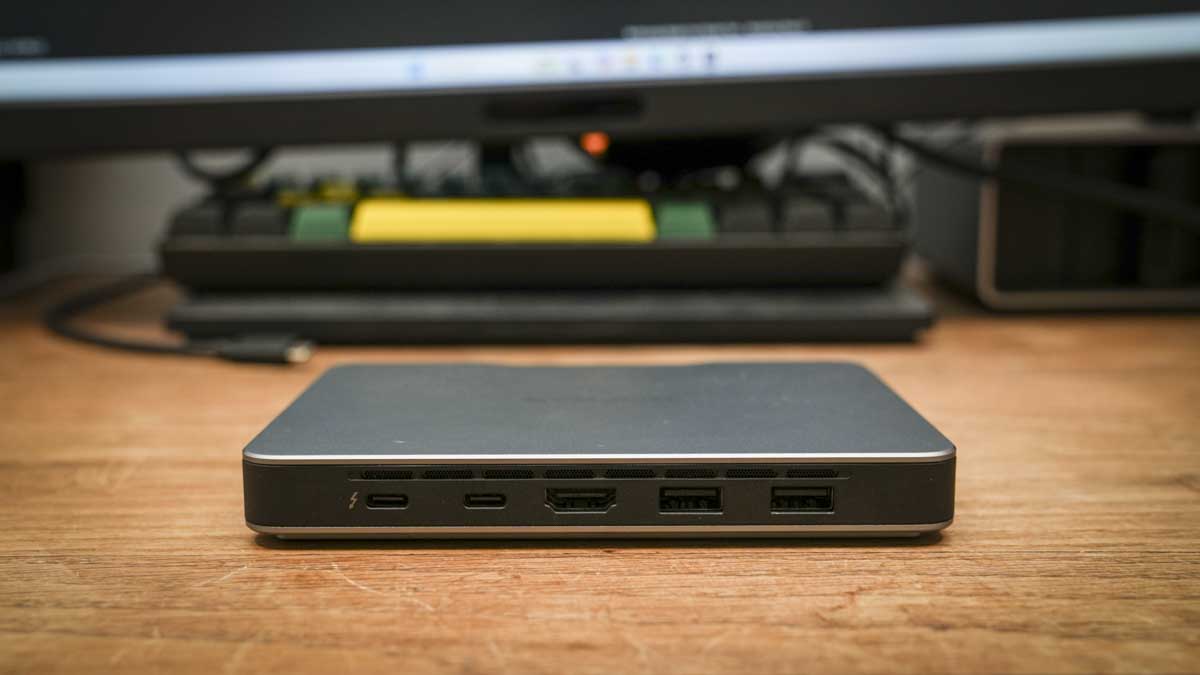
Khadas Mind 2S: Specs
CPU: Intel Core Ultra 7
Graphics: Intel Arc 140T GPU
RAM: 64GB LPDDR5X memory
Storage: 2TB PCIe 4.0 M.2 2230 SSD, Expandable: PCIe 4.0 M.2 2230 SSD
Front Ports: N/A
Rear Ports: Thunderbolt 4, USB4, HDMI 2.1 TMDS (18Gbps), USB-A 3.2 Gen2 (10Gbps)
Connectivity: Wi-Fi 6E (802.11ax), Bluetooth 5.3
Audio: N/A
Camera: N/A
Size: 146 × 105 × 20 mm
OS installed: Windows 11 Home
Accessories: N/A
Khadas Mind 2S: Design
Mini PCs usually have a very distinctive box-like design that instantly highlights exactly what they are. Here, the Khadas is so small and slim that it could be mistaken for a simple external hard drive or even a portable hub rather than a full-blown PC. The build quality is also one up on even the most premium of mini PCs, and the full metal build gives the Mind 2S a firm premium quality.
Although this mini PC is small, 146 x 105 x 20 mm, it's also surprisingly weighty, at 435 g, which means while it's slim and discreate form add little bulk the weight is slighty more noticeable, however, compared with an average laptop of a similar power it's considerably lighter, a fifth of the weight of a MacBook Pro M1 Max, making it, ideal for transporting from one location to another, for example, from home to the office.
What also marks this mini PC out against almost all others is its integrated modular design, with three accessories readily available to expand on the features and functionality of this small machine. All three of these accessories need to be purchased separately, and to be honest arent cheap.
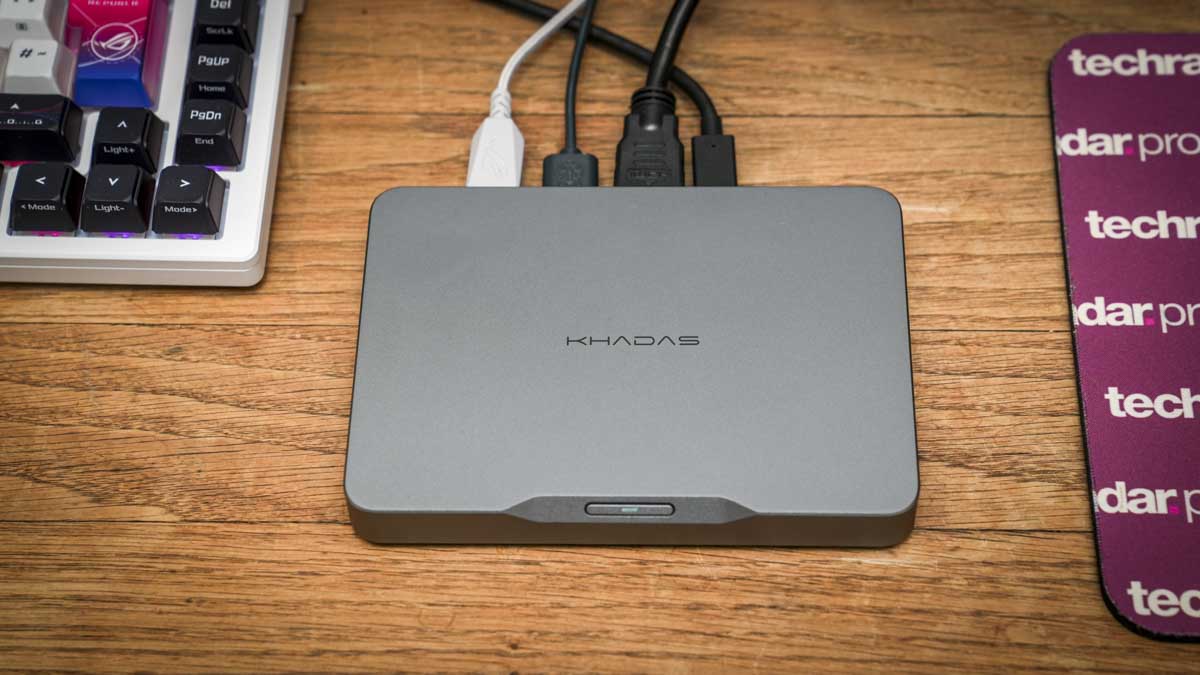
The first, Mind Dock, provides additional ports, including USB-A, a 3.5 mm audio jack, an SD card reader on the front, a network port, two HDMI, two further USB-A and a USB-C port on the back, greatly extending the ability to plug in accessories.
The next accessory is the Mind Graphics, and this is a much larger box, that includes an Nvidia GeForce RTX 4060 Ti desktop GPU with 8 GB of GDDR6, which should be more than enough to handle many of today's latest games or far exceed the abilities of most laptops. As well as the graphics capability, it expands the connectivity, offering a USB-C, three USB-A, two HDMI 2.1, one DisplayPort 1.4a, one Ethernet 2.5 Gbps, one SD card 4.0, one headphone jack (3.5 mm), built-in speaker and far-field microphone array, again vastly adding to the features and functionality of this small mini PC.
The final accessory is something just a little bit different, and that is the Tone2 and the multi-channel audio module, both open-source products that can be purchased as production models as well. This is essentially a tone board and is designed for audiophiles to ensure the highest possible audio quality from the machine.
Unlike other mini PCs that use USB eGPUs and expansion docks, the Khadas Mind 2S differs in that it uses a proprietary connector on the base, known as Mind Link, to seamlessly connect the Mind 2S to either the Mind Dock or Mind Graphics.
It all looks like a very neat and tidy solution. But these three accessories are all available as extras and are not included with the main purchase.
When it comes to the rest of the design, the front is kept incredibly clean with just the power button. Around the back, there's one Thunderbolt 4 port used for power, one USB4, one HDMI 2.1 TMDS (18 Gbps), and two USB-A 3.2 Gen 2 (10 Gbps) ports. Other than that, around the mini PC, there's very little else—aside from a large amount of venting needed to keep the internals cool when this powerful machine is under load.
- Design: 4 / 5
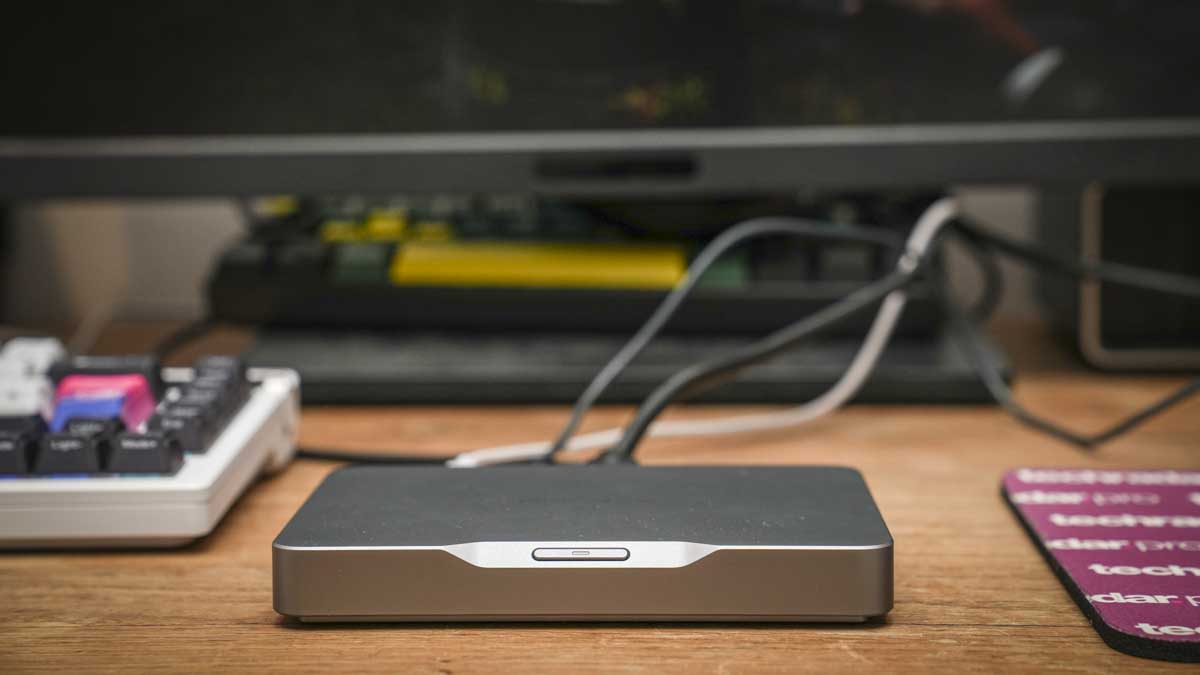
Khadas Mind 2S: Features
At present, there is only one version of the Mind 2S available, and that features an Intel Core Ultra 7 255H CPU with a 5.1 GHz turbo frequency, 16 cores, 16 threads, and 24 MB of cache. This is one of Intel's new generation Series 2 CPUs and incorporates the NPU and graphics onboard.
When it comes to AI potential, it has a total computing power of 96 TOPS and a GPU of 74 TOPS. That graphics card is an Intel Arc 140T GPU with a 2.25 GHz dynamic frequency. Supporting the processing power is 64 GB of LPDDR5X memory with a maximum frequency of 8400 MHz. It comes equipped with a 2 TB PCIe 4.0 M.2 2230 SSD, and there's an expansion port on the base, which enables you to install an additional PCIe 4.0 M.2 2230 SSD.
One interesting feature is the built-in 5.55Wh standby battery, which is useful when moving the machine from one location to another. Unlike almost all other mini PCs, you don't actually have to switch it off, just unplug, move it, plug it back in, and it should wake from sleep with all the applications and documents still open, just as if you were closing and reopening a laptop.
When it comes to connecting displays, there is a single HDMI 2.1 TMDS that supports a display of up to 4K 60 Hz. You can also connect a second display via the Thunderbolt or USB4 port, with support for 8K 60 Hz, 5K 72 Hz, or 4K 240 Hz.
One of the key features of the machine is the ability to use it with a range of accessories, at present, the Mind Dock and Mind Graphics, and it connects to these using the proprietary connector known as Mind Link.
This link is essentially PCIe 5.0 with 8x bandwidth, offers a maximum speed of 256 GT/s, and supports USB 3.2 Gen 2, HDMI 2.1 and 10A input power.
When the machine arrives, it's ready to go with Windows 11 Home pre-installed, so all you need to do is run through the setup process, and you're set.
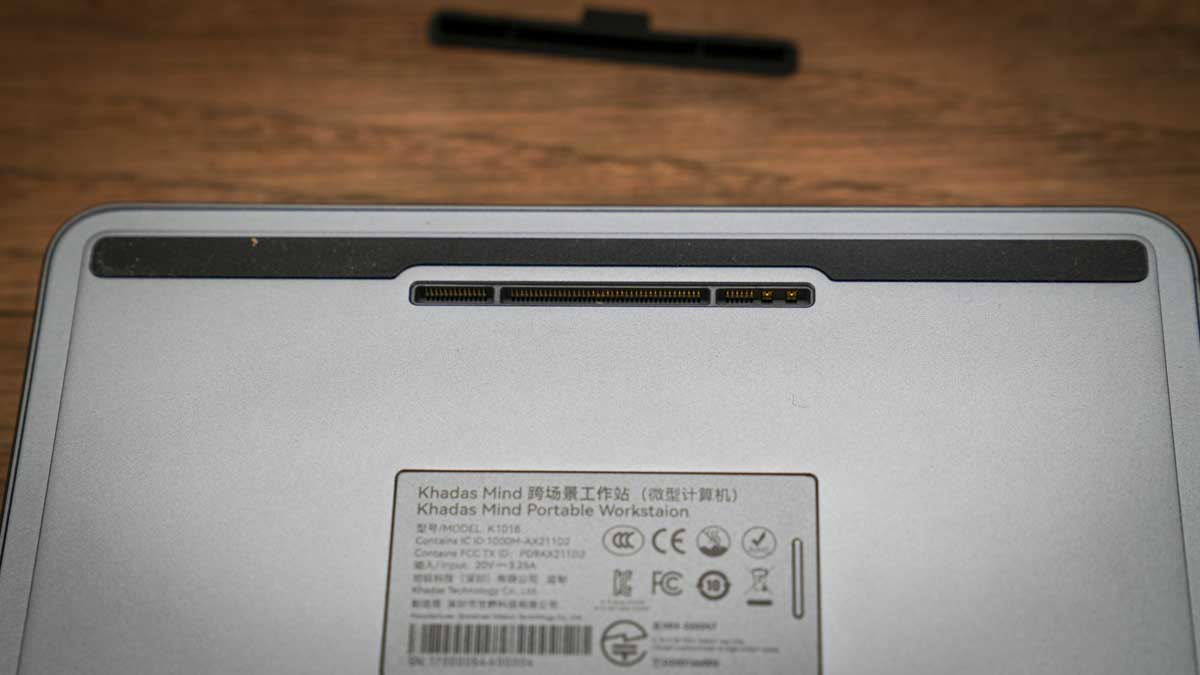
- Features: 5 / 5
Khadas Mind 2S: Performance
Crystal Disk Mark Read: 5022.03 MB/s
Crystal Disk Mark Write: 4877.26 MB/s
Geek bench CPU Multi: 14137
Geek bench CPU Single: 2802
Geek bench GPU: 35171
PC Mark Overall: 7638
Cine bench CPU Multi: 14353
Cine bench CPU Single: 1910
Fire Strike Overall: 7001
Fire Strike Graphics: 7357
Fire Strike Physics: 28246
Fire Strike Combined: 2811
Time Spy Overall: 3592
Time Spy Graphics: 3212
Time Spy CPU: 10931
Wildlife Overall: 21698
Steel Nomad Overall: 3613
Windows Experience Overall: 8.3
Check through the specifications of the Mind 2S, and you can't fail to be impressed by the high-performance components installed inside the small metal case. However, with those components come power and heat, and this, from the outset, was for me a major concern. However, through the test, it soon became apparent that whilst the fans do kick in and are very audible in some instances, such as editing 4K video and playing a few games, the machine was more than able to handle what was demanded of it.
Before going into processing power, a quick look at the machine itself and its physical design. The first thing that's notable is there's no ports on the front, the foward facing profile just looks very neat and clean. All ports are based along the back, and with it's compact size its extremely easy to place neatly under a monitor. The design is minimal, and if you were transporting this between home and the office on a regular basis, then you can really see why it's been designed with the Mind Dock as an accessory to expand on the ports.
As it is, using the Mind 2S along the ports are limited. The two USB Type-A ports are taken up with the keyboard and mouse (If not using BlueTooth), the HDMI with the monitor, and the Thunderbolt 4 is used for the power supply. This leaves you with just a single port that enables you to connect other devices. So, if you're happy with a minimalistic machine, then this is exactly what's on offer here. The one omission that I did miss was a 3.5 mm audio jack, although you could always use the USB-C port to plug in headphone accessories.
Loading up Windows 11 Home and Microsoft Office and starting to navigate around the OS, it was instantly apparent that while this machine was small, its processing power was substantial. All Windows applications loaded and functioned at speed with none of the hesitation you can sometimes get from ultra-compact mini PCs. In fact, this machine was able to handle all Microsoft Office applications just as well as most larger mini PCs and desktops. This performance is reflected in the Geekbench CPU single score of 2802, the PCMark overall score of 7638, and the Windows Experience overall score of 8.3, a result only achieved by the very best mini PCs.
Pushing the machine a little further, Adobe Photoshop and Lightroom, along with Bridge, were installed and loaded. Once again, the speed of the machine was impressive. Rendering thumbnails in Bridge, making adjustments in Lightroom, and creating multilayer compositions in Photoshop were all handled smoothly. A sure sign a machine is starting to struggle is when the brush tools become jittery when dodging and burning imagery, but here, the Mind 2S took all manipulation in its stride.
Photoshop relies on both CPU and GPU acceleration for filters and image manipulation, and with strong single-core performance, as shown in the Geekbench CPU and GPU scores, the responsiveness of brush movements, filter application, and image rendering was immediate.
Even in a tougher test, rendering thumbnails in Bridge, which can slow down many machines, the speed of the internal SSD at 5022 MB/s seemed to help. Alongside the high PCMark and Geekbench multicore results, it was able to render images quickly, which is a huge benefit for workflow. Lightroom is relatively lightweight when it comes to CPU and GPU usage, which is why a version runs so well on many mobile devices, again during batch export and more complex adjustments, Lightroom functioned quickly and exported multiple images at speed.
More impressive was switching over to DaVinci Resolve to edit a 4K video shot on the Sony Alpha 7 Mark IV. The footage was in Sony S-Log and required grading, something that usually causes mini PCs to struggle. Despite the GPU score being mid-range, the combination of a fast SSD and powerful CPU meant the Mind 2S was able to handle 4K video editing without issue, only struggling with the timeline when the edit reached around the 15-minute mark with grading applied. This is where the addition of the Mind Graphics Module would significantly boost the performance.
Having been impressed so far, I then decided to relax with a bit of gaming, playing both Hogwarts Legacy and Indiana Jones and the Great Circle. Both ran well at 1080p with settings at medium to high, something very few mini PCs can do—especially with a title like Indiana Jones.
One thing to note is that throughout these performance tests, the Mind 2S was able to keep up with almost everything thrown at it. The one issue was the noise level, the small internal fan generated quite a lot of noise but did help to keep everything cool and running. After an hour of intensive use, the top of the machine was noticeably warm to the touch, but not overly so.
At the end of the real world performance test and software benchmarking, I was impressed with this mini PC. Considering it's size it;s an extremely powerful mini PC, and what I really liked was that there is an option to purchase the Mind Dock for work and the Mind Display for home or both, it just offers a great portable solution that differentiates itself from both laptops and desktops.
- Performance: 5 / 5
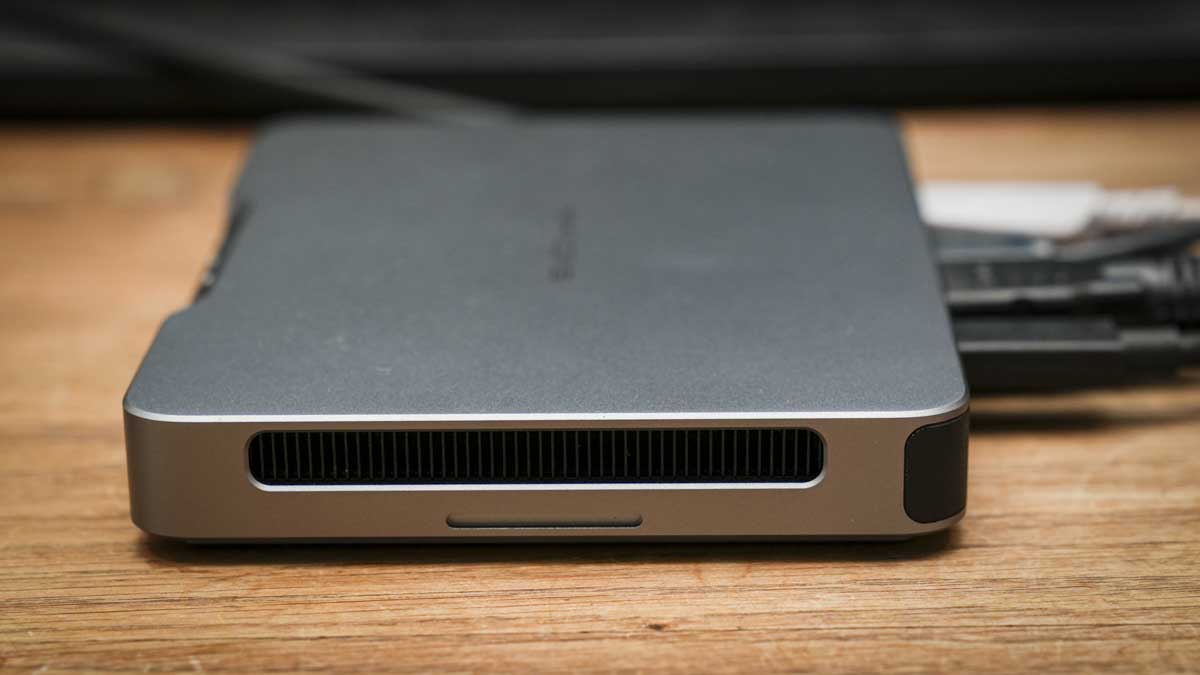
Khadas Mind 2S: Final verdict
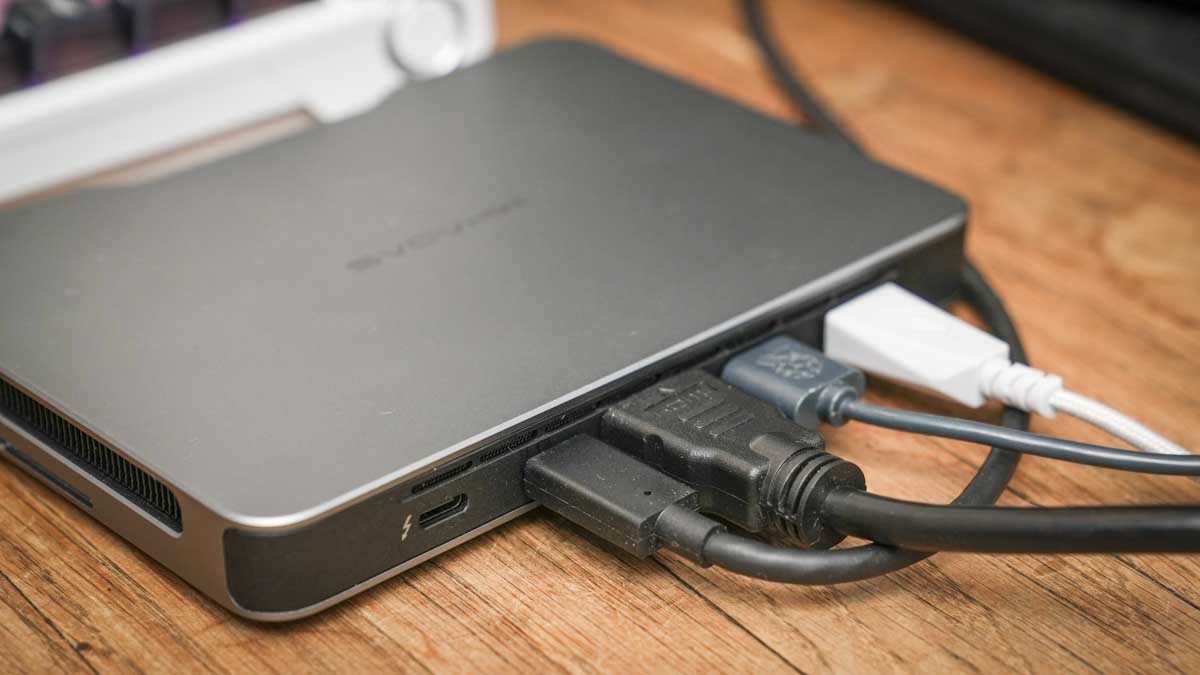
It's unusual to find a product quite so different to anything else out there. The Mind 2S essentially sits in between a desktop and a laptop. Like a Mini PC or desktop, you have the ability to plug it into a workstation and get to work, or if you need more ports or graphic power you have the Mind Dock and Mind Display.
But then, like a laptop, when you want to leave for the day, you can simply unplug it. You don't even need to power the machine down. Pop it in your bag, and in that respect, it's far smaller and lighter than a laptop. So, if you're simply going from home to office and office to home, this is a much easier, more portable computer than any laptop presently on the market.
Then, when you get home, you can plug it into your Mind Display, sit back, watch 4K or 8K films and play all the latest games with that powerful 4060 Ti graphics card handling the load.
However, both the Mind Dock and Mind Display are optional extras, and each significantly increases the cost. The Dock is $179, and the Mind Display is $1199, so it's by no means cheap.
Even with those two accessories stripped away, you still have the 2S, which is phenomenally powerful in its own right. The Intel Core Ultra 7 CPU, with its integrated NPU and GPU, offers an extremely powerful solution.
At the end of the test, I was genuinely impressed with the Khadas Mind 2S and can clearly see its potential. As a standalone product, it's neat, small, and offers a lot for the style-conscious and something beyond both a standard Mini PC and a laptop, this is a true portable workstation. The are a few small omissions, no 3.5 mm audio port for headphones, noticeable heat under load, and fan noise. then there's the fact that if you want to use the full potential of this machine then you'll also need to invest in the extras to maximise performance and see the machine's full potential, for me that would be two of the Mind Displays, one for home and the other for the Studio.
However, even taking all that into consideration, this is an exceptionally capable PC with more potential than any other machine I've tested in this category.
Should I buy the Khadas Mind 2S?
Value | Considering the performance, this is great value for money, although the cost does quickly ramp up with the optional accessories. | 4.5 |
Design | Sitting between a desktop and a laptop, this is a minimalistic design packed with power and potential. | 4.5 |
Features | Considering the size, it's feature-packed, with potential through the modules to expand its abilities and power. | 5 |
Performance | A machine that is truly different, with tons of potential for use at home and in the office, and enables a new way to commute light. | 5 |
Overalls | If you need an easy-to-use NAS or want to experiment, then the G9 is an outstanding option | 5 |
Buy it if...
You need a machine between home and office.
The small size and portability make it a great option if you need a machine you can transport between home and work without the bulk or weight of a larger laptop.
You need to keep documents open.
The internal battery is a real innovation. Like a laptop, you can unplug this small mini PC, and it goes into sleep mode rather than switching off, meaning when it powers back on, all your documents and applications remain open and ready for use.
Don't buy it if...
You need to work on the move
This machine sits between a laptop and a desktop and is more portable than a laptop, but it doesn't offer a screen, keyboard, or mouse—so it requires a static workstation to be used.
You need a battery-powered machine.
While there is an internal battery, and you can configure it to power the machine, battery life is extremely short—less than 30 minutes for standard use and even less under load.
For more working on-the-go, we've rounded up the best business laptops around.
Alastair is a photographer, filmmaker and tech writer who has been working in the publishing industry since the late 1990s. For more than 25 years he has covered photography, video and technology across Future's photography, technology and gaming brands. He runs a photography and video production company and lectures in TV and film. He can usually be found testing mini PCs or prototyping and prop building with the aid of 3D printing.
You must confirm your public display name before commenting
Please logout and then login again, you will then be prompted to enter your display name.
